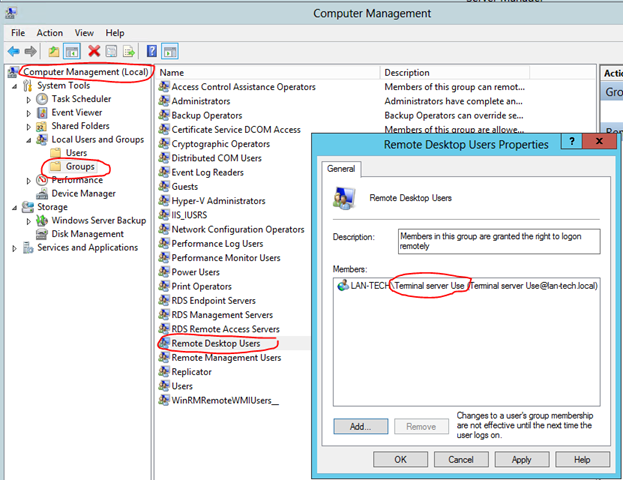


This disables some enhanced security settings that are implemented by Server 2008 and Vista. If you have problems connecting to Server Core with Windows XP, execute the command cscript c:\windows\system32\f /cs 0. If we want to see the current settings, we use the command cscript c:\windows\system32\f /ar /v. With the command cscript c:\windows\system32\f /ar 1, we can disable it again. This command will also create an exception rule in Windows Firewall. But don't worry… we can execute the command cscript c:\windows\system32\f /ar 0 to enable Remote Desktop. In Server Core, we can't do this anymore. With the GUI versions of Windows, we right-clicked Computer to open Properties, afterwards selected the tab Remote, and then marked the checkbox Enable Remote Desktop on this Computer. If we want to connect to a Server Core machine, we must first enable Remote Desktop on this particular server. With this command, we start a Remote Desktop session to another machine. This scheduling is done automatically by the remote desktop server and does not require configuration.Įvery system administrator knows the command mstsc /v servername /console.

This feature distributes CPU resources evenly across each Remote Desktop Session ensuring that one user session does not impact the performance of another user session. ▪Įnhanced CPU Scheduling-Remote Desktop Services now includes a processor scheduling feature known as Fair Share Scheduling. This feature is useful for applications that may require each instance to have a unique IP or when troubleshooting and you need to track the IP of a particular session on a remote desktop server. Remote Desktop IP Virtualization-Remote Desktop IP Virtualization allows administrators to create a pool of IP addresses allowing each remote desktop session to have a unique IP address. If the quota is reached, the server will delete the profiles of users with the oldest last logon until the profile cache falls below the quota. To help control the disk space usage of cached profiles, a GPO can be applied to Remote Desktop Servers placing a quota on the amount of disk space that can be used by cached profiles. It is common to see cached copies of profiles using a lot of storage space on Remote Desktop Servers. Roaming User Profile Cache Management-Larger Remote Desktop Services deployments may have hundreds or even thousands of users logging into Remote Desktop Servers. These client experience features can be configured when adding the Remote Desktop Session host role. Changes to Remote Desktop Session Host include: ▪Ĭlient Experience Configuration-You can now centrally manage Remote Desktop audio/video redirection and Windows Aero interface options for Remote Desktop clients. By default, LSView updates server availability every five minutes.The Remote Desktop Session Host role includes several new features to provide a better administrative experience as well as increased security for Remote Desktop Services deployments.

HOW TO CRACK WINDOWS SERVER 2003 TERMINAL SERVICE LICENSING LICENSE
The date and time each license server is available. It is important to know the type of license server when troubleshooting. The Workgroup License Server type for workgroups is Domain. There are two types of license servers, Enterprise License Servers and Domain License Servers. The types of all license servers in the domain. This includes new license servers added to the domain and all license servers from the current Active Directory Site within the domain. The names of all license servers in the current domain and site. LSView displays the following information: It is useful for monitoring and logging the status of license servers. Terminal Services License Server Viewer (LSView) is a GUI tool that displays information about all available Terminal Services license servers in the current domain and current site of the computer. Terminal Services License Server Viewer (LSView) is a graphical tool that displays information useful for monitoring and logging the status of all available Terminal Services license servers in the current domain and current site of the computer. I would suggest trying out Terminal Services License Server Viewer.


 0 kommentar(er)
0 kommentar(er)
